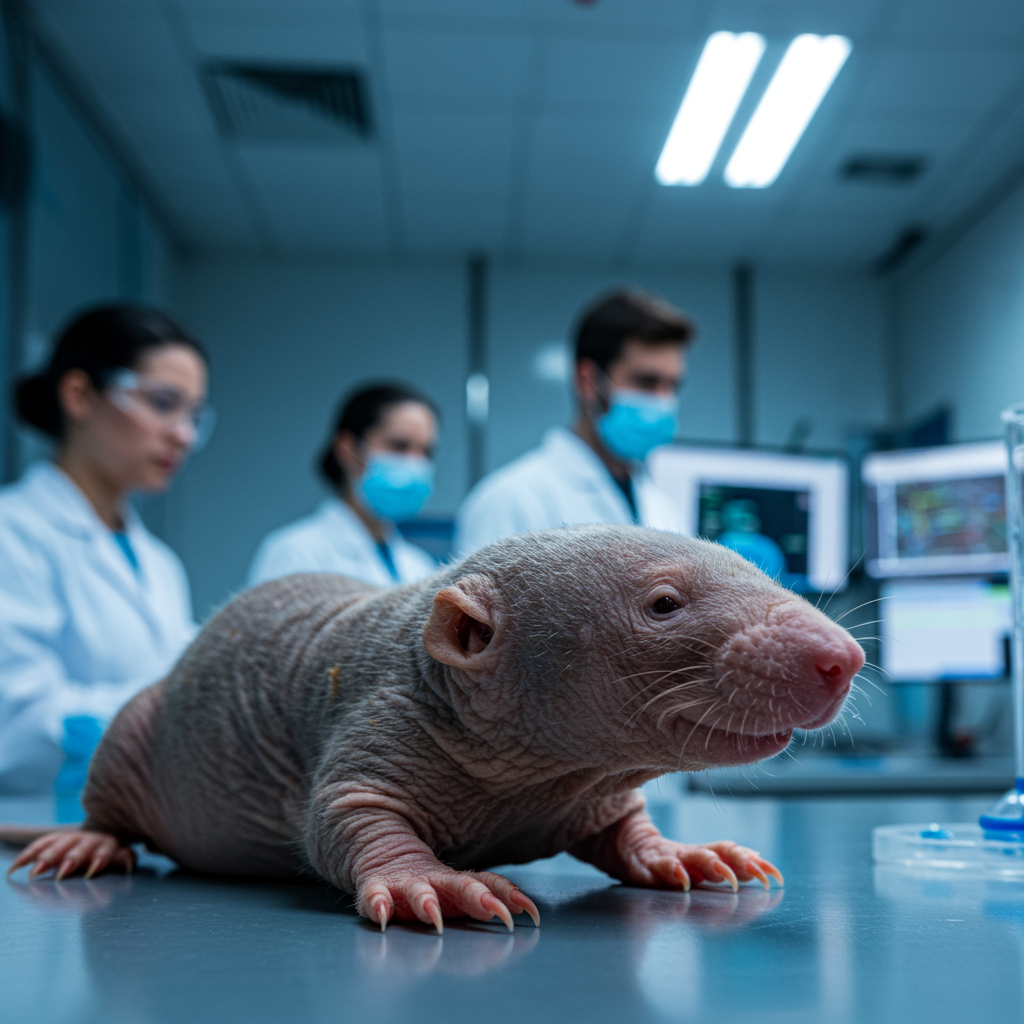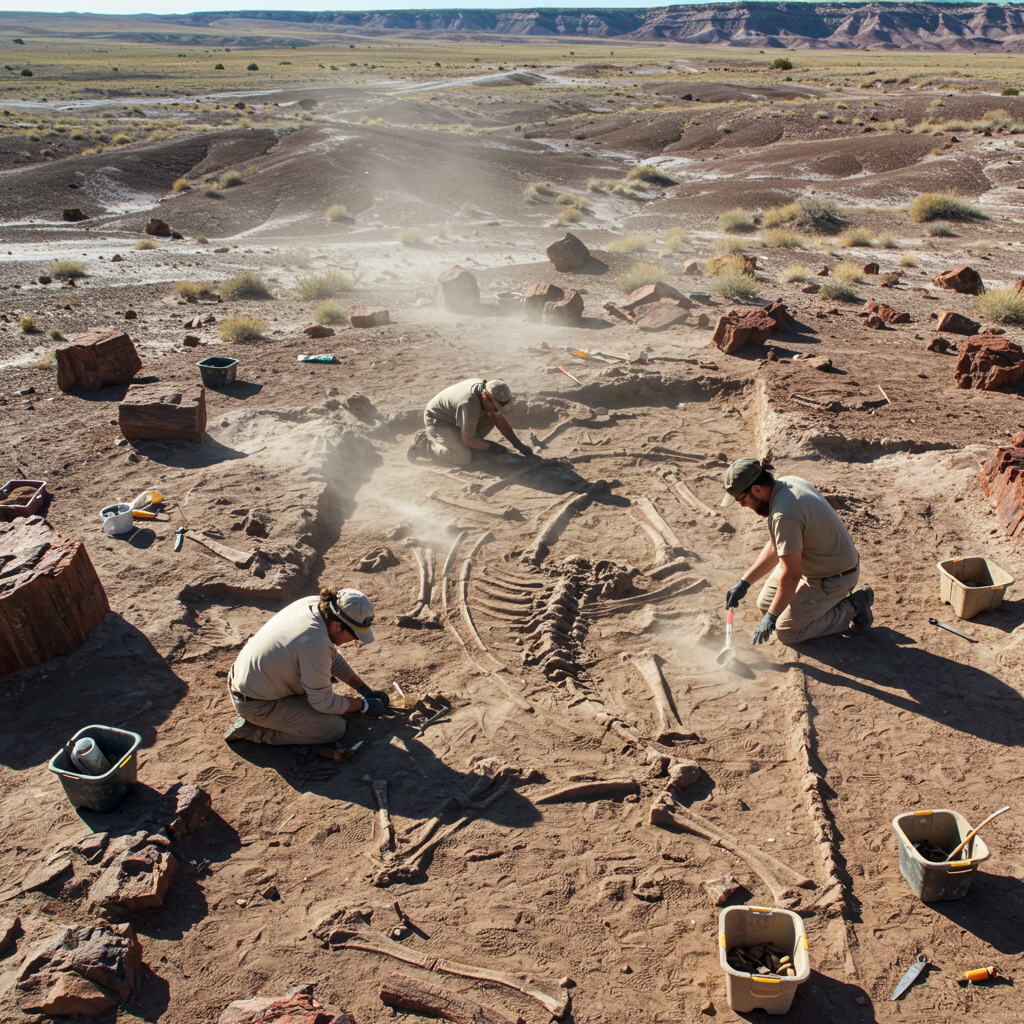Imagine a creature that lives for decades, shrugs off cancer, and shows few signs of aging. This isn’t a science fiction fantasy; it’s the naked mole rat, a bizarre-looking rodent whose extraordinary longevity and disease resistance are captivating scientists worldwide. These subterranean marvels, often described as “sausages with teeth,” are revealing profound genetic secrets to aging that could revolutionize human health.
The scientific community is buzzing with groundbreaking discoveries from these peculiar animals. From unique DNA repair mechanisms to specialized gene regulation and even a powerful anti-cancer molecule, the naked mole rat longevity puzzle is slowly coming together. Unlocking these biological adaptations offers a unique blueprint for understanding and potentially combating age-related diseases in humans.
The Phenomenon of the Naked Mole Rat
Naked mole rats (Heterocephalus glaber) are truly an anomaly in the mammalian kingdom. While a typical mouse lives only about three years, these burrow-dwelling rodents can thrive for nearly 40 years. This makes them the longest-lived rodents on Earth. Beyond their impressive lifespan, they exhibit a remarkable resilience to many age-related ailments.
These include cancer, neurodegeneration (deterioration of the brain and spinal cord), and arthritis. They defy common biological rules, prompting intense research into their unique biology. Their unusual appearance and underground lifestyle are just the surface of their biological intrigue.
DNA Repair: Unraveling the c-GAS Protein Secret
A significant breakthrough, published in the journal Science by a team from Tonji University in Shanghai, China, pinpoints a unique DNA repair mechanism as a key to the naked mole rat’s extended life. DNA is our genetic blueprint, constantly susceptible to damage. Our cells have natural mechanisms to mend these breaks, using an undamaged strand as a template.
This research focused on a specific protein called c-GAS, which senses and initiates DNA damage repair. In humans, c-GAS paradoxically interferes with the process of knitting DNA back together. Scientists believe this interference can promote cancer and shorten our lives. However, in naked mole rats, the exact same c-GAS protein functions in reverse. It actively aids in mending DNA strands, keeping the genetic code pristine within each cell.
Professor Gabriel Balmus, a DNA repair and aging expert at the University of Cambridge, described this as a “biological Lego piece.” He explained that while human and mole rat c-GAS share a basic shape, “a few connectors are flipped” in the mole rat version. This allows it to assemble a completely different structure and function. Over millions of years of evolution, naked mole rats have seemingly “rewired” this pathway to their advantage. This discovery raises fundamental questions about evolutionary reprogramming and offers potential targets for anti-aging research.
Beyond DNA Repair: Epigenetics and Molecular Aging
While naked mole rats display extraordinary demographic longevity, scientists at the University of Rochester sought to understand if they still experience “molecular aging.” Aging isn’t just about mortality rates; it’s also about accumulating molecular and physiological changes over time. Their study, published in Nature, explored epigenetic aging—changes in DNA methylation (DNAm).
The research confirmed that naked mole rats do indeed undergo significant age-related remodeling of their methylome. This indicates they experience molecular aging despite their constant mortality rate. Researchers developed a precise epigenetic clock for naked mole rat blood. This clock accurately predicted chronological age, showing a distinct increase in “methylome information loss” over their lifespan. Interestingly, older reproductive females (queens) showed a slightly slower epigenetic aging rate.
Comparative analysis with mice revealed unique patterns in genes crucial for telomere maintenance (Tert) and DNA repair (Prpf19) in naked mole rats. These differences likely contribute to their extreme lifespan and cancer resistance. When normalized for maximum lifespan, the epigenetic aging dynamics across naked mole rats, mice, and humans surprisingly align, suggesting a conserved biological principle underlying the aging process across species.
The Role of Gene Regulation in Extreme Lifespan
Another fascinating study from the University of Rochester, detailed in Cell Metabolism, investigated how gene regulation impacts longevity across 26 mammalian species. This comparative analysis revealed critical gene expression patterns linked to lifespan. Long-lived species, like the naked mole rat, exhibit low expression of genes involved in energy metabolism and inflammation. Conversely, they show high expression of genes related to DNA repair, RNA transport, and cellular skeleton organization.
Short-lived species displayed the opposite patterns. The researchers identified two major regulatory networks as “pillars of longevity.” First, Circadian Networks control “negative lifespan genes” (energy metabolism, inflammation). In long-lived species, these genes are expressed only at specific times, restricting their overall activity. This highlights the importance of healthy sleep cycles. Second, the Pluripotency Network governs “positive lifespan genes” (DNA repair, RNA transport). This network is crucial for cellular rejuvenation and DNA repackaging, which often becomes disorganized with age.
Evolution appears to have “activated the pluripotency network to achieve longer lifespan,” according to researcher Vera Gorbunova. These findings suggest a dual anti-aging strategy: boosting positive lifespan genes while reducing negative ones. This deeper understanding of gene regulation offers new avenues for anti-aging interventions.
High Molecular Weight Hyaluronic Acid (HMW-HA): A Cancer Shield
Perhaps one of the most tangible breakthroughs comes from the University of Rochester team, led by Professors Vera Gorbunova and Andrei Seluanov. Their work, published in Nature, identified high molecular weight hyaluronic acid (HMW-HA) as a crucial factor in the naked mole rat’s exceptional cancer resistance. Naked mole rats possess nearly tenfold the amount of HMW-HA throughout their bodies compared to mice and humans. When this substance was removed from their cells, they became more prone to tumors.
Building on this, the team genetically engineered mice by transferring the naked mole rat variant of the hyaluronan synthase 2 gene. This gene is responsible for producing HMW-HA. While all mammals have this gene, the naked mole rat’s version boasts greatly heightened expression, leading to higher HMW-HA levels.
The genetically modified mice showed remarkable benefits. They had enhanced protection against both spontaneous tumors and chemically induced skin cancer. Critically, these mice enjoyed improved overall health and an extended median lifespan of roughly 4.4 percent. As they aged, they exhibited lower inflammation, a common hallmark of aging. Researchers believe HMW-HA’s ability to modulate the immune system is central to these effects. The next goal is to translate these benefits to humans, by either slowing HMW-HA degradation or increasing its synthesis, opening new doors for human health benefits.
Broader Lessons from Long-Lived Species
The naked mole rat is just one example of nature’s ingenuity in extending longevity. Traditional aging research often focuses on short-lived models like mice, which may not fully represent the diversity of aging mechanisms. By studying “alternative animal models of aging research,” scientists gain a more comprehensive understanding.
Bats, for instance, live 3-10 times longer than similarly-sized mammals despite high metabolic rates. Their longevity is linked to efficient antiviral immune responses and tight inflammation control. The bowhead whale, the longest-lived mammal at over 200 years, exhibits exceptionally low incidence of age-related diseases. Genomic studies reveal duplications of genes related to cell cycle control, cancer protection, and DNA repair. Turtles, some living over a century, show adaptations to extended hypoxia and enhanced antioxidant enzymes.
A common thread among many long-lived species, including the naked mole rat, appears to be highly efficient DNA repair mechanisms and robust inflammation control. These comparative approaches highlight how diverse species have evolved unique solutions to the challenge of aging.
Implications for Human Health and Anti-Aging
The insights gleaned from naked mole rat longevity research offer profound implications for human health. By understanding how these animals resist aging and disease, scientists hope to develop new therapies. Professor Balmus expressed optimism that “reverse-engineering the naked mole-rat’s biology” could bring much-needed treatments for an aging society.
From activating our own DNA repair pathways like the c-GAS protein in naked mole rats, to enhancing our body’s production of protective molecules like HMW-HA, the possibilities are vast. Furthermore, insights into gene regulation and epigenetic control could lead to strategies that influence our “positive” and “negative” lifespan genes. The ultimate goal is not just to extend lifespan, but to significantly improve the quality of life as we age, reducing the burden of age-related illnesses.
Frequently Asked Questions
What makes naked mole rats so resistant to cancer?
Naked mole rats exhibit remarkable cancer resistance due to several factors, prominently including high levels of high molecular weight hyaluronic acid (HMW-HA). This molecule, which they possess nearly tenfold more of than humans or mice, plays a crucial role in preventing tumor formation and modulating the immune system. Additionally, their unique DNA repair mechanisms, specifically how the c-GAS protein functions, significantly aids in maintaining genomic integrity, preventing the cellular damage that can lead to cancer.
How does naked mole rat research apply to human aging?
Research into naked mole rat longevity provides critical insights that could lead to new human anti-aging therapies. Scientists are studying their efficient DNA repair systems, unique gene regulation patterns, and protective molecules like HMW-HA. The goal is to identify specific biological pathways or compounds that can be “reverse-engineered” or mimicked in humans. This could lead to treatments for age-related diseases like cancer, neurodegeneration, and arthritis, ultimately enhancing both lifespan and healthspan in humans.
Are there any current therapies based on naked mole rat longevity?
While direct human therapies derived from naked mole rat longevity are still in the research and development phase, significant progress is being made. For example, the successful transfer of a naked mole rat longevity gene (related to HMW-HA production) to mice has already shown improved health and extended lifespan. Researchers are actively exploring avenues to apply these findings to humans, such as developing molecules that can either slow the degradation of HMW-HA or augment its synthesis in the human body. These are currently in pre-clinical trials.
The naked mole rat continues to be a living enigma, a testament to evolution’s diverse solutions for survival. As scientists continue to delve into its genetic makeup and biological pathways, the hope remains that these tiny, peculiar rodents will unlock the ultimate secrets to aging for all species, including our own. The journey from subterranean tunnels to human therapies is long, but the potential rewards are immense, promising a future of extended health and vitality.




